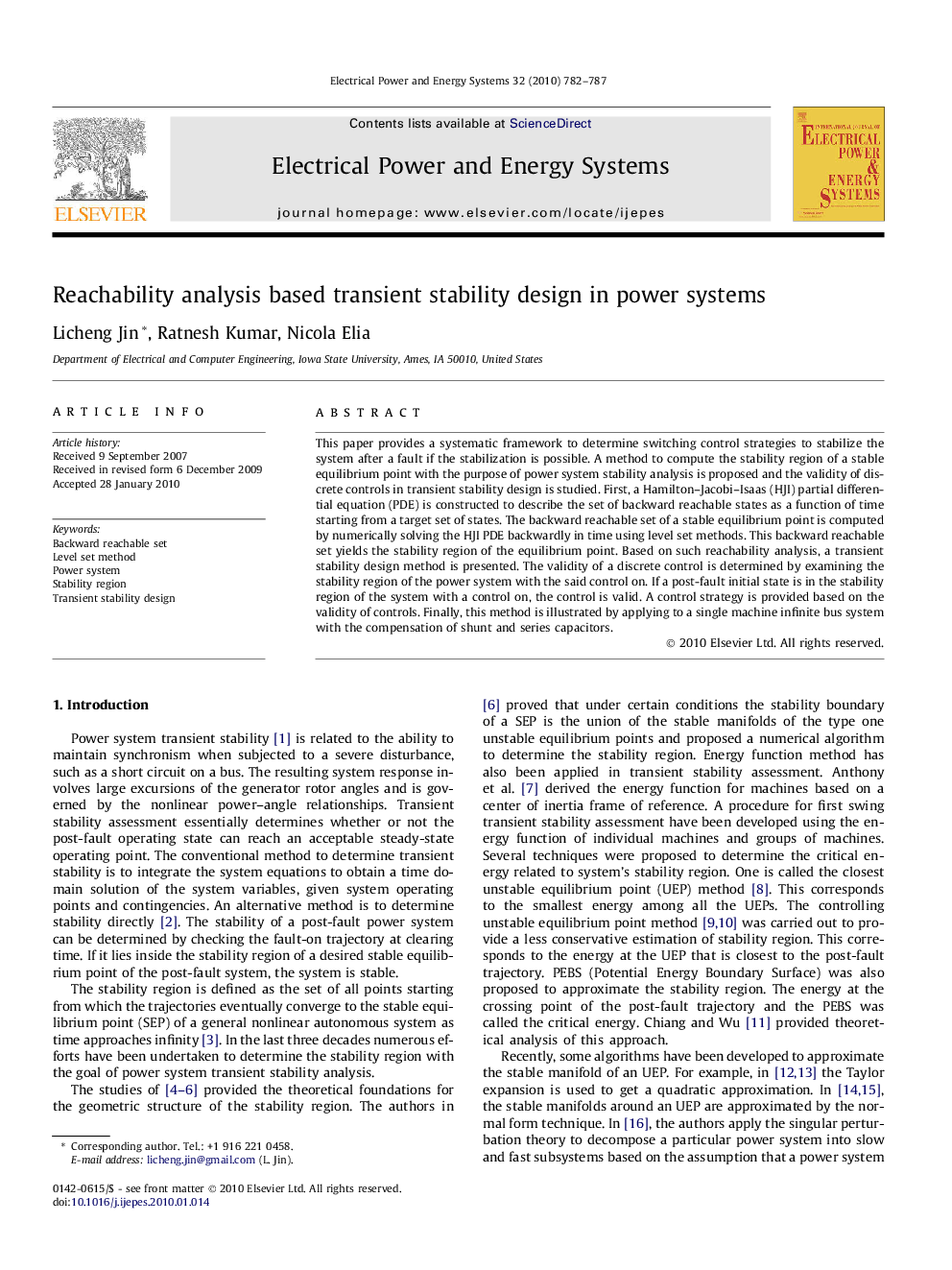| Article ID | Journal | Published Year | Pages | File Type |
|---|---|---|---|---|
| 400211 | International Journal of Electrical Power & Energy Systems | 2010 | 6 Pages |
This paper provides a systematic framework to determine switching control strategies to stabilize the system after a fault if the stabilization is possible. A method to compute the stability region of a stable equilibrium point with the purpose of power system stability analysis is proposed and the validity of discrete controls in transient stability design is studied. First, a Hamilton–Jacobi–Isaas (HJI) partial differential equation (PDE) is constructed to describe the set of backward reachable states as a function of time starting from a target set of states. The backward reachable set of a stable equilibrium point is computed by numerically solving the HJI PDE backwardly in time using level set methods. This backward reachable set yields the stability region of the equilibrium point. Based on such reachability analysis, a transient stability design method is presented. The validity of a discrete control is determined by examining the stability region of the power system with the said control on. If a post-fault initial state is in the stability region of the system with a control on, the control is valid. A control strategy is provided based on the validity of controls. Finally, this method is illustrated by applying to a single machine infinite bus system with the compensation of shunt and series capacitors.
